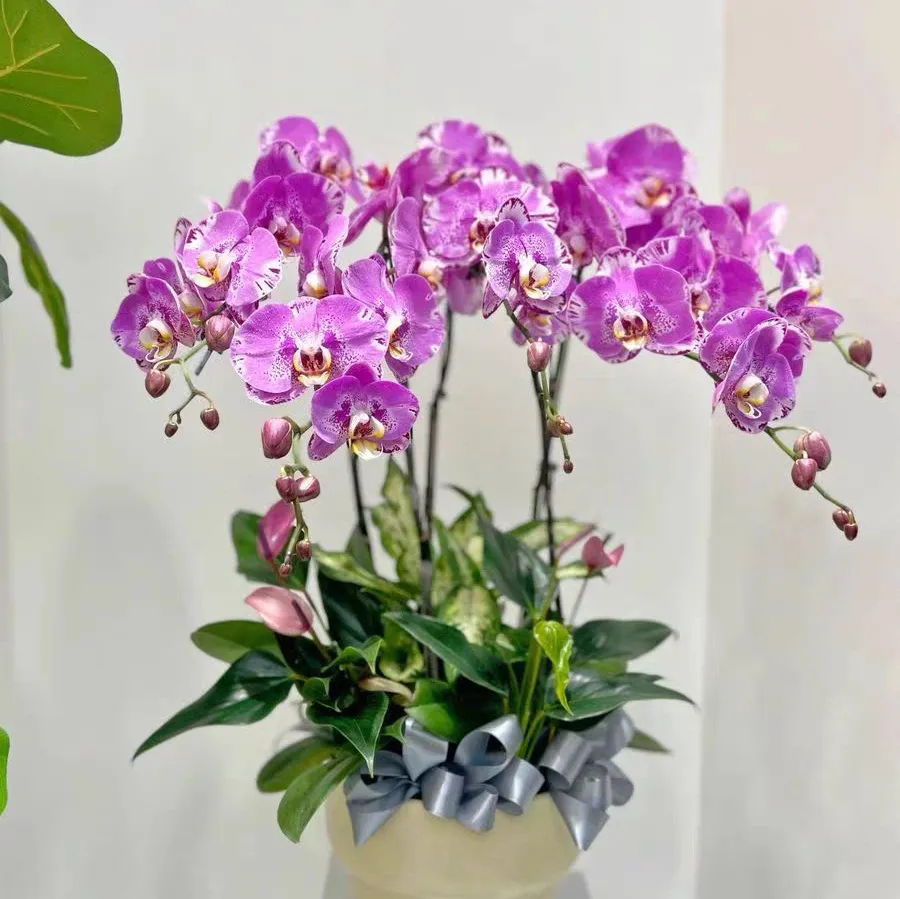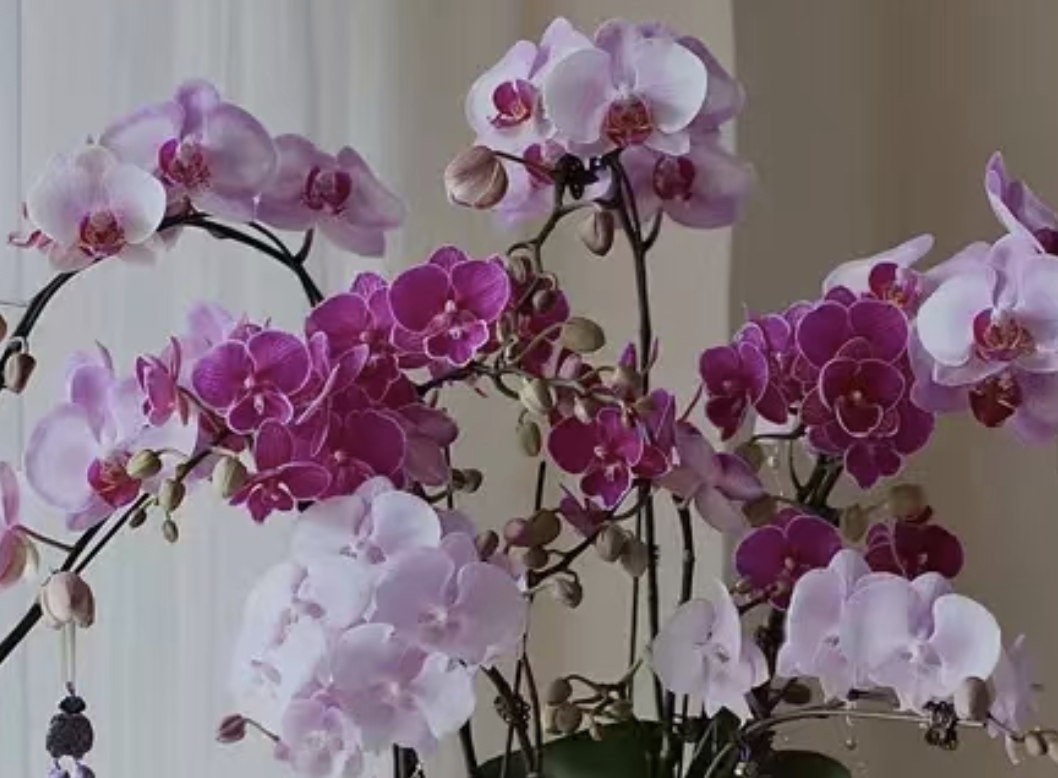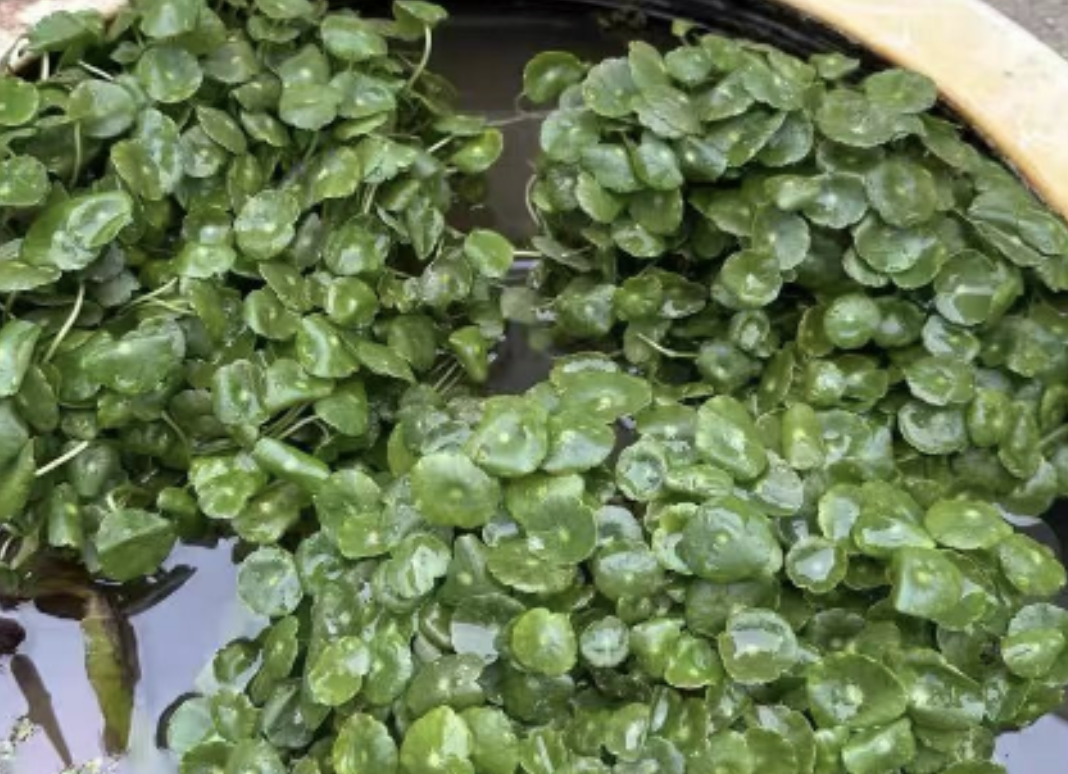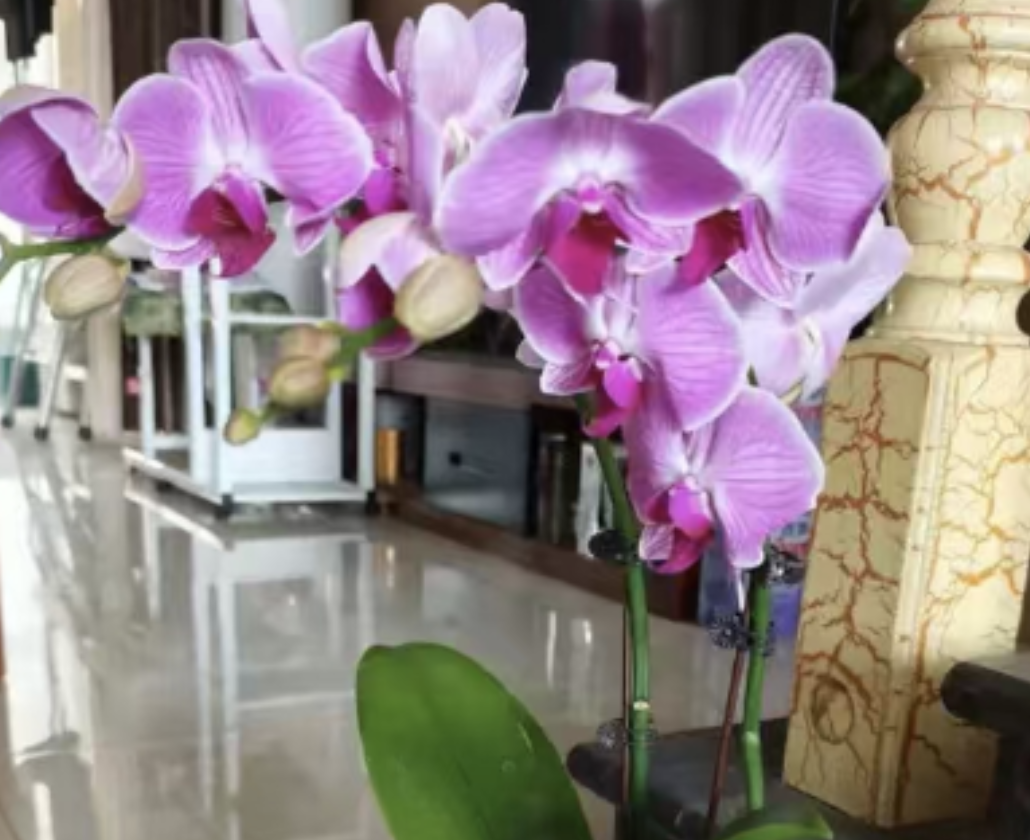# Phalaenopsis Care in Autumn: The Critical Period for Reblooming
Autumn care is the "critical period for reblooming" of Phalaenopsis. If details like temperature, light, and watering are not handled properly, you may not see blooms next year! In fact, you just need to understand its "little preferences" in autumn—avoid extreme temperature fluctuations, provide sufficient soft light, and adjust watering and fertilization according to the season. By doing so, your Phalaenopsis will steadily grow flower spikes and bloom profusely next year!
## I. Temperature: Protect It from the "Autumn Tiger" and "Cool Nights"
The most comfortable temperature range for Phalaenopsis in autumn is 15°C–25°C. Just like humans need to add clothes when the season changes, you must help it avoid "temperature pitfalls of heat and cold".
- **Northern China**: Mornings and evenings turn cool after autumn begins. Do not place the orchid by the window to avoid direct exposure to cold winds. When the "Autumn Tiger" (persistent hot weather after the Start of Autumn) strikes, avoid intense sunlight; if the temperature exceeds 25°C, move it to a spot with diffused light. Before indoor heating is turned on, keep it warm at night—never let the temperature drop below 15°C, otherwise the roots will "slack off" and fail to function properly.
- **Jiangsu-Zhejiang-Shanghai Region**: Autumn temperatures here are just right. Simply place the orchid in a well-lit area with diffused light indoors. There’s no need to use air conditioning for heating, and do not leave it outdoors directly to avoid frost damage. A mild environment is ideal for it to store energy.
## II. Light: Provide Sufficient "Soft Light" to Stimulate Flower Buds
Phalaenopsis dislikes strong sunlight, but insufficient light in autumn makes it hard to form flower buds. About 3 hours of bright diffused light per day is perfect—similar to how humans soak up gentle autumn sun to supplement vitamins.
- **Choose the Right Location**: An east-facing window is most suitable, as it gets soft morning sun. If placing it by a west-facing window, keep it 2 meters away from the window to avoid intense afternoon sunlight. Never expose it to direct sunlight, otherwise the leaves may get scorched, and flower bud differentiation will be affected.
- **Remedy for Insufficient Light**: If your home has weak light, don’t worry—there’s no need for special supplementary lighting. Just avoid placing it in a completely shaded corner and keep the environment bright, and it will adapt gradually.
## III. Watering: Follow "Water When Dry" and Choose the Right Time
In autumn, the "water when the soil surface is dry" principle still applies to watering, but you need to adjust the frequency according to the season and choose a "comfortable time" for the orchid to water it.
- **Watering Frequency**: Once or twice a week is sufficient. First, insert your hand 2 cm into the sphagnum moss—if it feels dry, water thoroughly. Timely pour out any accumulated water in the saucer to prevent the roots from soaking. The fleshy roots of Phalaenopsis are most afraid of stuffy and humid conditions, just like how human feet feel uncomfortable when soaked in water.
- **Watering Time**: Choose morning or evening, and avoid watering at noon when temperatures are high. Otherwise, the roots will be suddenly stimulated by hot water, which may cause them to shrink and fail to absorb water. If the air is dry in northern China, you can also spray water around the leaves (avoiding flowers and the center of the leaves!) or place a basin of water next to the flower pot/turn on a humidifier to adjust the air humidity to 50%–80%—this will keep the leaves looking more vigorous.
- **Water Quality Note**: If using tap water, let it stand for 1 day first to allow chlorine to dissipate before watering. Otherwise, the roots will be irritated, and long-term use may cause root problems.
## IV. Fertilization: Supplement Nutrients in Stages (September and October)
Autumn is a critical period for Phalaenopsis to grow flower spikes. Fertilization should be done "on demand"—just like humans need extra nutrition in autumn and winter, but over-fertilization is not allowed.
- **September**: Start increasing the application of phosphorus and potassium fertilizers. For example, dilute potassium dihydrogen phosphate at a ratio of 1:1000 and apply it once a week (either by irrigating the roots or spraying the leaves). Do not sprinkle it directly on the leaves or flowers, as this may cause burn damage. This helps the orchid store enough energy to grow flower spikes.
- **After October**: As the weather cools down, root absorption slows down. Switch to fertilizing once every two weeks. Do not overdo it—concentrated fertilizer will burn the roots. The safest way is to mix water-soluble fertilizer with watering, allowing nutrients to seep in slowly.
## V. Repotting and Pruning: Autumn Is the Perfect Time for Repotting—Remove Withered Leaves
If the roots of your Phalaenopsis have filled the pot or the sphagnum moss has become compacted, autumn is the ideal time for repotting. Just like humans need to move to a larger house when the old one is too cramped, proper repotting promotes better growth.
- **Repotting Tips**: If the root system is well-developed, choose a slightly larger transparent pot. For the growing medium, select materials with strong water retention such as sphagnum moss or pine bark. Trim off any rotten roots from the old sphagnum moss, soak the new sphagnum moss until soft, and squeeze out excess water before use. After repotting, place the orchid in a well-ventilated area with weak light to acclimate for a few days—do not expose it to intense sunlight immediately, allowing the roots to adapt to the new environment.
- **Pruning**: When you see yellowed or diseased leaves, promptly trim them off with alcohol-sterilized scissors. Do not leave them on the plant, as they waste nutrients. Just like humans need to clean up fallen leaves, pruning allows the Phalaenopsis to focus its energy on flower bud differentiation.
## VI. Pest and Disease Control: Prevent These 3 "Troubles" Early
The air is slightly humid in autumn, making Phalaenopsis prone to scale insects, anthracnose, and soft rot. You must keep an eye out for early prevention:
- **Scale Insects**: If you see small white spots on the undersides of leaves, immediately wipe them off with a cotton swab dipped in alcohol. For severe infestations, spray insecticide.
- **Anthracnose**: If brown spots appear on the leaves, spray carbendazim (a common fungicide) to prevent the spots from spreading.
- **Soft Rot**: In the early stage, water-soaked spots will appear on the leaves. Immediately trim off the diseased leaves and spray a specialized fungicide—otherwise, the rot will spread to the stem.
## VII. Don’t Overlook These "Small Details"
- After watering, ensure good ventilation—turn on a small fan to blow for 1–2 hours. Do not let the sphagnum moss stay stuffy and humid, as this easily causes root rot.
- Do not place the orchid in bedrooms or near microwaves: Bedrooms have poor ventilation; areas near electronic devices have radiation; and places with large temperature fluctuations (such as doorways or air conditioner vents) will cause "stress" to the orchid—all of which are harmful to its growth.
In fact, autumn care for Phalaenopsis is not difficult. It’s like taking care of a "delicate small potted plant". Keep the temperature stable, provide the right light, and water/fertilize on time. Naturally, it will grow well, produce strong flower spikes next year, and bloom abundantly!
How to Care for Phalaenopsis in Autumn to Encourage Reblooming

Share with
Tagged in :




Leave a Reply